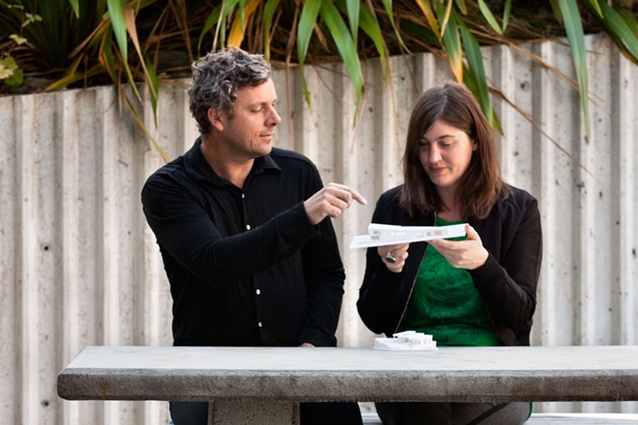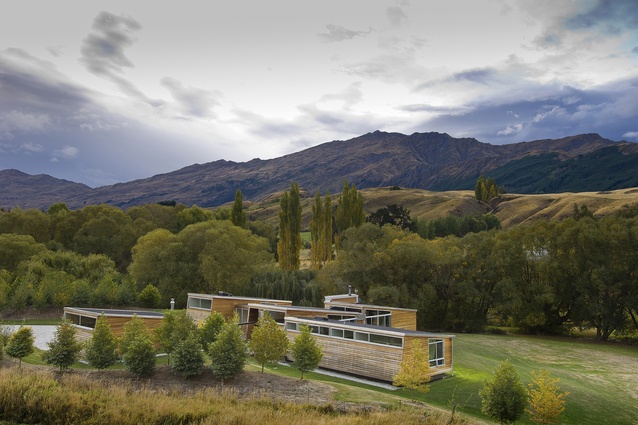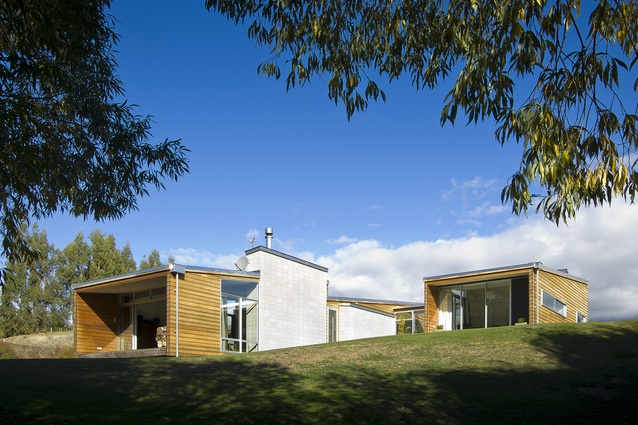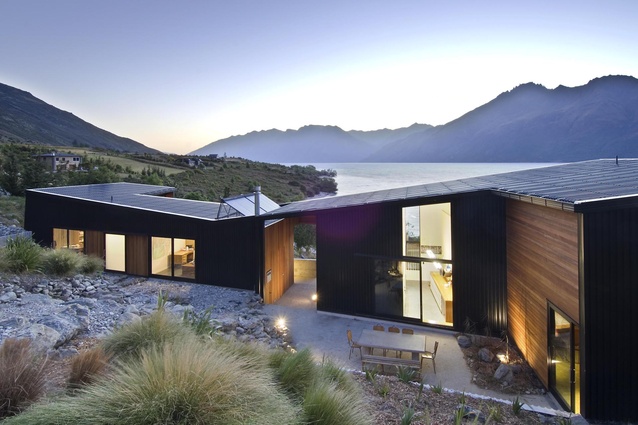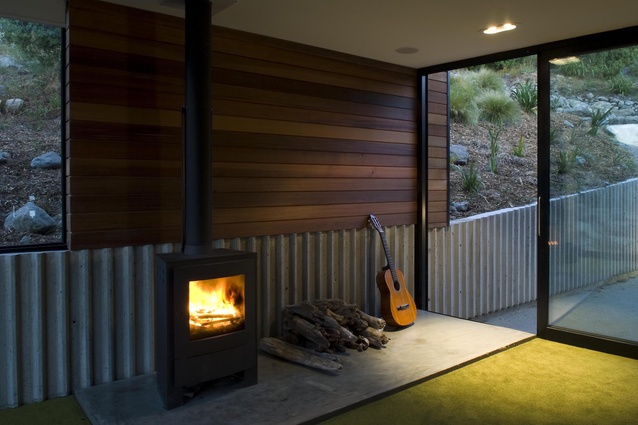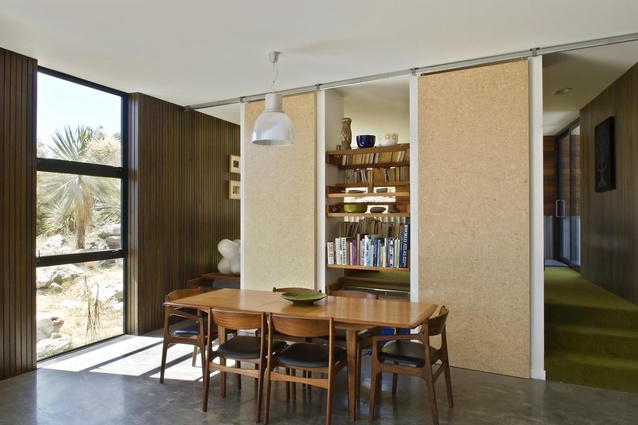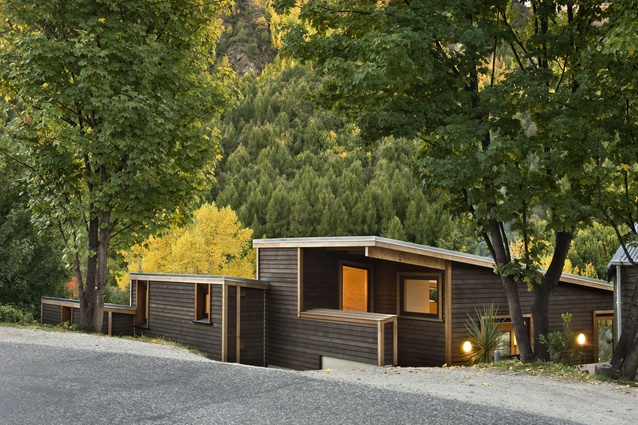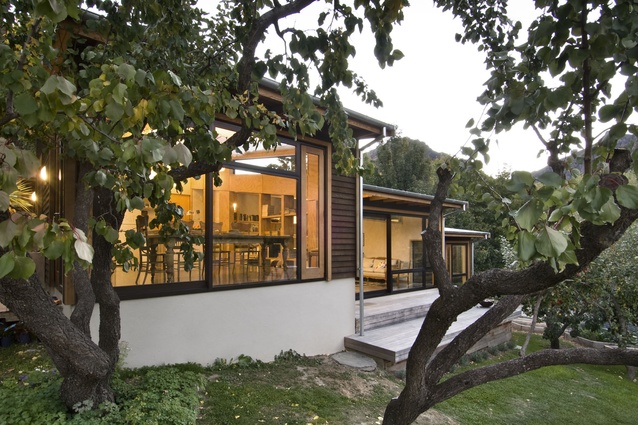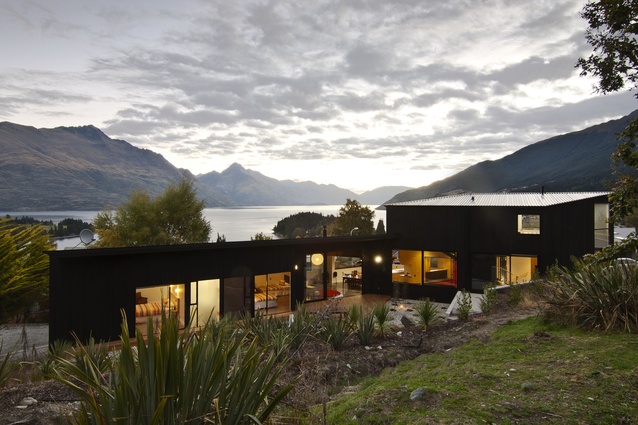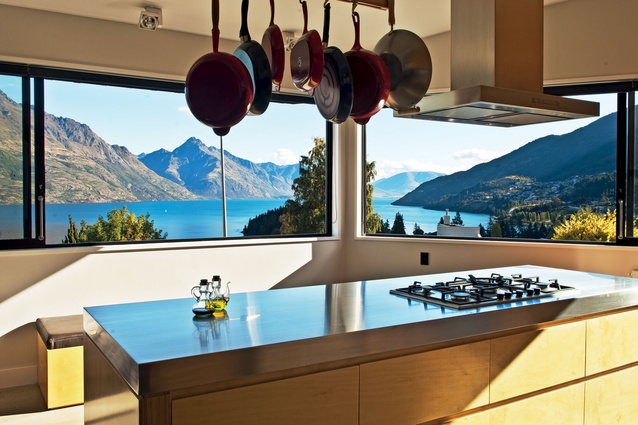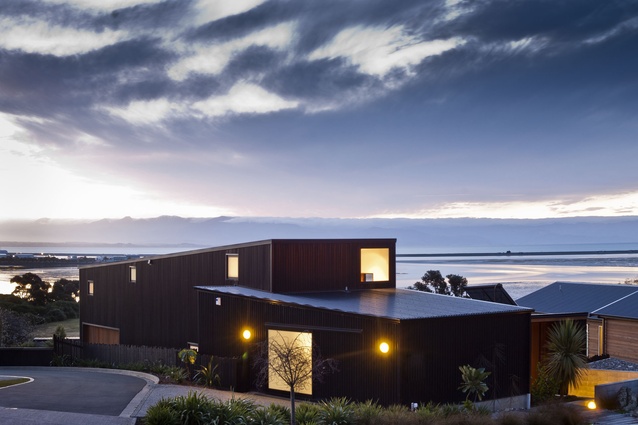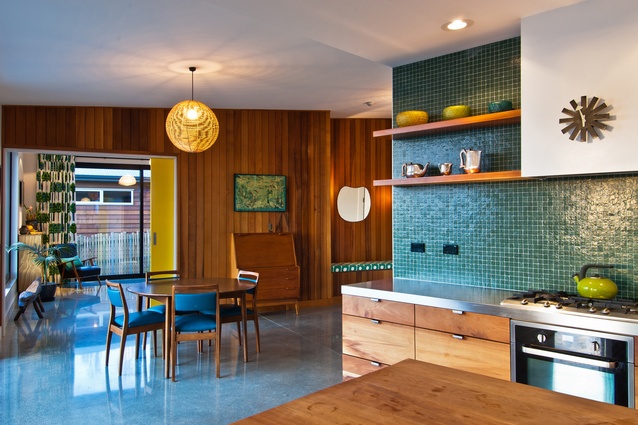Kerr Ritchie Architects
Houses editor Justin Foote talks to Bronwen Kerr and Pete Ritchie about juggling life and work.
Houses: What are your backgrounds, how did you come to be Kerr Ritchie?
Pete Ritchie: I initially trained as a land surveyor working in Queenstown and it was while I was doing that that I met Bronwen, who was working as an architect in Wellington. I moved to Wellington, where we had our three children, and it was there that I retrained as a landscape architect at Victoria.
Bronwen Kerr: Whereas I took the much more conventional route of finishing high school and heading to architecture school. After which I started working, doing a stint at Studio Pacific in Wellington before going overseas for a year and working in Rotterdam.
Houses: How did you juggle being parents and Pete being a student and then work as well?
BK: At that point my main focus was the children, so I wasn’t really working. We were living in a small cottage, so we utilised our multidisciplinary skills and built a little house in the back garden and sold the cottage.
PR: We also did my parent’s house at that time.
BK: Yeah, so we had a couple of projects like that and that was what got us through.
Houses: Looking back on that time, do you think that that set you up to do this work on a day-to-day basis? Is the work ethic something that kicked off at that point?
BK: Well I suppose we’ve become masters at multitasking. It certainly felt very chaotic and it wasn’t until our youngest started kindy that it really felt like I had gained any control back; with three kids it’s pretty busy.
PR: I think we’ve both always been reasonably disciplined people in terms of work ethic. I don’t think we’ve ever struggled to find a balance between work and life.
BK: No, no exactly. One of us drops the kids at school and the other one is out here, we don’t get too distracted. But it was definitely harder at the start, working off the dining room table. I remember the little house we designed in Wellington, I kind of did it on a laptop and printed it out on A4 paper, all with a baby in the bouncer, it was just ridiculous.
PR: Luckily it was a small house.
BK: It was the perfect house to print on A4 paper.
Houses: How do you structure Kerr Ritchie then, do you collaborate across all the projects, or do you keep things fairly separate?
PR: Option A.
BK: We’ve definitely got individual strengths that we bring to each project, you know. Pete, because he was a surveyor and has a great planning background, he’s good at the big picture issues but isn’t so finicky about the finer details…
PR: Yeah, not my greatest strength, that extra little bit of patience at the end. Whereas Bronwen’s very good at that, so it works well.
Houses: Thinking back to that small house in Wellington, I’m guessing it was very site specific; how do you respond to the spaces around here, do you access an ‘Otago’ kind of mind-set?
BK: Whatever we do, we respond to the landscape and to the context. Of course, all architects consider all of these aspects, but we bring a reasonably holistic view of the landscape and the built environment to each of our projects.
PR: Similar to Wellington, the sites here are often tricky sites – well, our clients very seldom present us with a nice flat piece of land – and to be fair we probably prefer a site which is more complex. But whether it’s Wellington or here, or anywhere for that matter, the same fundamental principles apply, you’re still looking for the sun and still looking to create good interior and exterior spaces.
Houses: I’m not sure of the exact number, but it’s somewhere between 4% and 8% of houses built in New Zealand are architecturally designed. Is that true of Queenstown?
PR: I don’t know, Queenstown has a lot of architects, so there are probably more architecturally designed houses here, comparatively speaking, than the rest of the country. That said though when you go to Shotover Country and similar style developments, I don’t know if there are so many architecturally designed houses in there.
BK: And even at Jack’s Point now there are a lot of home build companies.
Houses: That’s interesting. I know, initially anyway, Jack’s Point had some very tight covenants in place and obviously, in an area of outstanding natural beauty that’s what you want. From your point of view is there a robust enough plan for the houses in these areas to be properly designed and built, are people doing enough to ensure that the beauty of the area is maintained within the built environment?
PR: That’s a good question and, I guess, there are a few different ways of looking at it. Using Jack’s Point as an example, there was great intent when it first started off, however, there’s the risk that in so doing it can become a slightly dull where everything pretty much looks the same and I don’t necessarily think that that makes for an interesting built environment. The great thing about Jack’s Point is, they’ve really set out some great foundations in the landscape, a lot of great planting, everyone has got native species and so forth and that’s really started to pay dividends now.
BK: So even though they’ve had to relax the rules a bit in terms of materials and things I don’t think it really matters because it’s going to be such a great landscape.
PR: Then there’s the type of development where we are, Wye Creek, where there are no convenants. So we probably couldn’t have built this house in a lot of covenanted places because they would have said the roof pitch has to be this and your cladding materials aren’t in line with what we want and so forth, yet along this little subdivision here, there are some quite interesting houses and while they’re reasonably diverse, they all work nicely with the landform.
Houses: Reason enough for homeowners to contract an architect.
BK: Definitely. Particularly if you have a site with any kind of interesting features, it’s the best way to go. We’ve done projects for people where we’ve been impressed that they can even see their site is a site. We did one project in Dunedin that was this tiny sliver of practically vertical land. Not many people would have been able to visualise it as a piece of land that you could build a house on and certainly, no design build company would have touched it.
PR: Or what ends up happening with those sites, is that, even though they have some nice natural contour, the design build companies come round and flatten the whole thing off and then plonk their plan on top. It’s not particularly well integrated for landscapers.
BK: Also, they were a client that understood the value of doing something that’s of good quality. Similarly, we’re doing a house in Christchurch that’s 110m2, but they’re clients that appreciate small spaces. They’re sailors and they spend a lot of time living on a boat and as such they didn’t want a conventional house, they wanted a house that was about them.
PR: I think what ends up happening generally is that people start out designing a house for themselves but then start thinking resale and things like that. When you start thinking like that houses start getting fatter because while the majority of people may be happy just with a family bathroom they then put the ensuite in and then they have to put the attached double garage on and so on. All of sudden there’s all this space that for much of the time is wasted space.
Houses: So do you find it easier to work with a client who has a very specific idea of what they want to achieve?
PR: I quite like clients to come to us who are open to numerous possibilities.
BK: Yeah, because if they do think they know what they want it’s usually a little bit predictable.
PR: There’s not much poetry in that.
BK: No exactly, whereas the ideal client will come with a more poetic kind of brief.
Houses: I guess, similarly, from your point of view, if a client comes to you and says ‘I’ve seen your work, I really, really like it, I want you guys to design a house for me, I don’t have a block of land yet so you’ll have to come with me and we’re going to have to look for something’. Is that the dream job, to get in on that level of involvement?
PR: It’s always nice to have some input at that initial level. A lot of clients buy a piece of land and then research the architect, whereas, I think, in a perfect world they should pick the architect first and talk it through a bit more. Especially in terms of additional insight. For example, I’ve lived in Queenstown for 20 years and been a surveyor and a landscape architect, which means I have quite a lot of built up knowledge of the local landscape that can be beneficial to a client.
Houses: You mentioned earlier about the excitement that comes with each new design. Do you experience a little bit of a thrill when you’re driving down the road and you see a house that you’ve designed, even if it’s five years or so down the track?
BK: Yeah, it’s quite nice going round to Pete’s parent’s place because we did their house and then we did the house across the road as well and another one just round the corner, so that’s quite nice. It is nice to look back on projects because sometimes you feel like you’re in a rut and you think, ‘oh God, so boring’ and then you look back on something and think, ‘oh, actually that was good.’
PR: The other side of that is we’re also our own worst critics as well.
Houses: What are your favourite materials?
BK: Well, I guess it would be fair to sat we like natural honest materials, we like using timber and concrete. Sometimes I feel that we’re slightly limited in our palette because you always think about cost and it’s not like we don’t use marble and the like, but even a large house has a budget, so I guess we’re probably naturally inclined to reasonably modest materials.
PR: But even humble materials can cost a lot of money.
BK: That’s true. So even with a big-budget project it probably wouldn’t change that much.
PR: Some of our houses are $500,000 and some of them are $2m-plus, but the differences aren’t so much in terms of materials used, more in terms of scale. So we do use a lot of steel and cedar and concrete.
Houses: And what about sustainability in terms of the finished product?
BK: That is definitely something we try and focus on. We don’t consider ourselves experts and it’s an ongoing education, but we’ve always got that in mind in terms of material choices and we’re always learning in terms of efficiency, which is a huge issue down here.
PR: It is ongoing but essentially at the end of the day get the basics right. We would never build a house just to the New Zealand code.
BK: Almost every client says they want their house to be energy efficient, it’s just that they also might have quite a tight budget and not be prepared to shrink the house to suit that. But there are people working on making things more cost effective. A big one around here is SIPs panels, a lot of people are working with those and there’s even more happening that is going to make it more affordable.
Houses: Is there a push locally to come up with newer and better materials or is it seen as too big a problem?
BK: Some of the smaller players have been inspired to import or offer alternatives to the available products.
PR: Yeah that’s right, I don’t know about the larger organisations, but I’ve been reading some really sobering information about how much we pay for building products here compared to the US and even Australia, there’s definitely room for improvement within the New Zealand Building industry.

